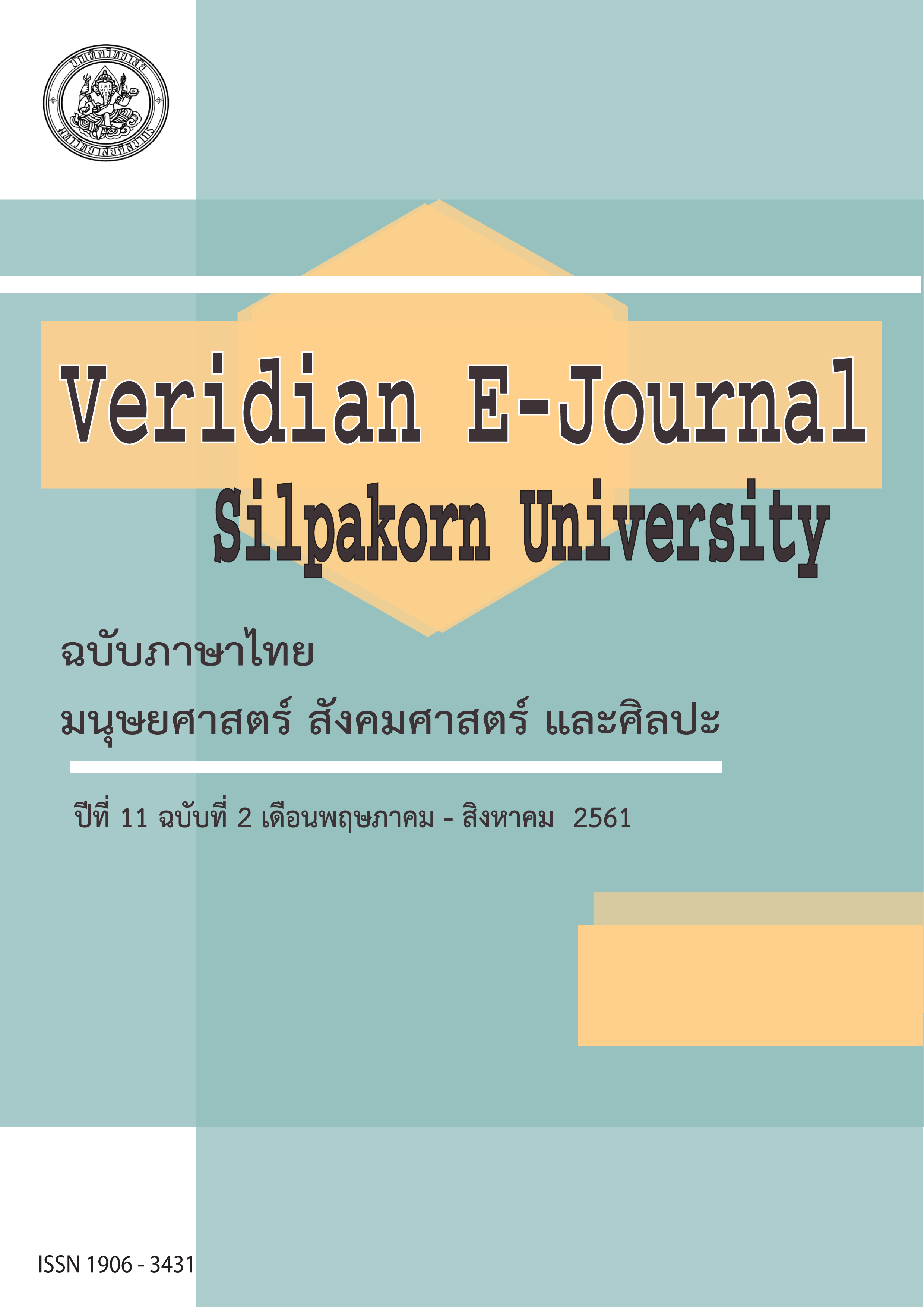ความคิดเห็นของประชาชนต่อการจัดการผลกระทบสิ่งแวดล้อม หลังการสร้างเขื่อนแม่กวงอุดมธารา จังหวัดเชียงใหม่ (Public Opinions on Environmental Impacts Management after The Construction of Mae Kuang Udom Thara Dam, Chiang Mai Province.)
Main Article Content
Abstract
การศึกษาครั้งนี้มีวัตถุประสงค์เพื่อ 1) ศึกษาระดับความต้องการของคนในชุมชนต่อการจัดการผลกระทบสิ่งแวดล้อมของหน่วยงานภาครัฐ 2) ศึกษาแนวทางการจัดการผลกระทบสิ่งแวดล้อมเพื่อลดความวิตกกังวลของคนในชุมชนของหน่วยงานภาครัฐ การศึกษาครั้งนี้ใช้รูปแบบการวิจัยเชิงปริมาณ และการวิจัยเชิงคุณภาพประกอบกัน เครื่องมือที่ใช้ในการวิจัยประกอบด้วยแบบสอบถาม แบบสัมภาษณ์ จากกลุ่มตัวอย่าง คนในชุมชนจำนวน 362 คน และผู้นำชุมชน 10 คน และเจ้าหน้าที่ภาครัฐ จำนวน 12 ผลการศึกษาพบว่า ระดับความต้องการต่อการจัดการผลกระทบสิ่งแวดล้อมหลังการสร้างเขื่อนจากหน่วยงานภาครัฐ ผลการสำรวจพบว่ามีความต้องการโดยภาพรวมอยู่ในระดับปานกลาง เมื่อพิจารณาในแต่ละด้านพบว่า คนในชุมชนมีระดับความต้องการในการแก้ไขปัญหาในด้านคุณค่าการใช้ประโยชน์สูงที่สุด รองลงมา ได้แก่ ด้านกายภาพ ด้านชีวภาพ และด้านสังคม ตามลำดับ ส่วนระดับการจัดการต่อผลกระทบสิ่งแวดล้อมโดยหน่วยงานภาครัฐ พบว่าโดยภาพรวมหน่วยงานภาครัฐมีระดับการจัดการในระดับปานกลาง เมื่อพิจารณาในแต่ละด้าน พบว่าการจัดการในด้านคุณค่าการใช้ประโยชน์ที่สูงที่สุด รองลงมาคือ ด้านชีวภาพ ด้านสังคมและด้านกายภาพ ตามลำดับ ซึ่งปัญหาที่สำคัญคือเรื่องการบริหารจัดการน้ำของเขื่อนและการแก้ไขปัญหาน้ำไม่เพียงพอ ผู้นำชุมชนควรสนับสนุนกิจกรรมภายในชุมชนด้านอนุรักษ์สิ่งแวดล้อมและทรัพยากรธรรมชาติในชุมชน การใช้น้ำอย่างรู้คุณค่า หน่วยงานภาครัฐควรจัดทำนโยบายและมาตรการบริหารการจัดการน้ำอย่างเป็นรูปธรรมเพื่อแก้ปัญหาในระยะยาว เนื่องจากปัญหาการขาดแคลนน้ำนั้นจะส่งผลกระทบต่อการดำเนินชีวิตของคนเป็นวงกว้างและเพื่อใช้เป็นแนวทางประกอบการพิจารณาการก่อสร้างเขื่อนในโครงการต่อๆไป
The purposes of this research were to 1) the level of demand from the locals towards the management of environmental effects by government agencies. and 2) the methods in managing environmental impacts that the government agencies can apply to reduce the locals’ anxieties. This study used both quantitative and qualitative research methods. Data were collected from fieldwork studies; questionnaires, interviews, and focus-group discussions. Samples were the locals consisting of 362 households, 10 community leaders, and 12 government officers. The results found that the demand to management of environmental impacts after the construction of the dam from the government sector, according to overall survey was the moderate level. When considered by aspects, level of demand to problem solving about human used value was highest followed by physical, biological and social aspects, respectively. Meanwhile, management of environmental impacts of the government sector, according to survey with community leaders and government officials, was found to be at moderate level in overall. When considered by aspects, management of human used value was the highest followed by biological, social and physical aspects, respectively. The major problem is the water management of the dam and the problem of water is not enough. Community leaders should support activities about environment and natural resource conservation and worthy water use. The government sectors should provide a concrete plan and measure regrading water management for long-term solving since water shortage will have affected livelihood of people extensively so that it can be employed as a guideline for further consideration about future dam construction projects.
